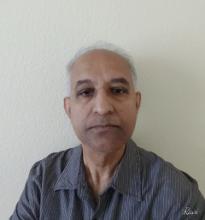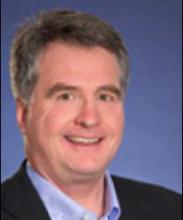Machine learning for Signal Processing

Dr. Bala RaviKumar
Professor
CS and ES Departments, SSU
Thu, 04/17/2014
Abstract – Machine learning is increasingly popular for solving a wide-range of problems. Instead of explicitly programming a computer to solve a problem, machine learning allows a computer to create a model based on sample solutions (called training set) and use the model to solve problems. Machine learning is routinely used to solve problems such as voice recognition, image classification, translation from one language to another etc. In this talk, we will survey the role of machine learning in the area of human-brain interface using the EEG and related signals.
Dr. Ravikumar received his Ph.D. at the University of Minnesota and has taught at the University of Minnesota, University of Rhode Island, and San Francisco State University. He has been with Sonoma State University since 2001. Ravi’s areas of interest include Algorithm Design, Theory of Computation, Pen-based computing, Data Mining, and Bioinformatics. He has supervised more than 25 Master's theses and 3 Ph.D. theses. He has served on the program committees of several international conferences, and most recently Ravi organized a conference on the Applications of Automata Theory in San Francisco in Summer 2008. He is currently co-editing a special issue of the International Journal of the Foundations of Computer Science.
Next Generation Cellular & WLAN - Networks, Devices and Services

Mr. John Harmon
Applications Planning and Marketing Manager
Agilent Technologies
Thu, 04/03/2014
Abstract – Wireless has become intrinsic within our lives. People, machines and devices yearn to be connected anywhere, all the time. We will look at two growing segments of wireless technology: 5G Cellular and WLAN to see how this might be realized.
Mr. John Harmon has worked for Hewlett-Packard/Agilent for 34 years. In that time, he has held various positions in R&D, Manufacturing, Marketing, Business Development and now Application Marketing in Agilent Microwave Communications Division. John currently focuses on next generation WLAN technologies and is an Agilent representative to the Wi-Fi Alliance and IWPC Industry Consortium.
CMOS comparators: Basic Circuits All Over Again

Dr. Tom Matthews
Chair
Electrical & Electronic Engineering Department, CSU Sacramento
Thu, 03/27/2014
Abstract – Regenerative comparators are an important element in many contemporary analog and mixed-signal integrated circuit (IC) designs, including pipelined and flash analog-to-digital converters. The presenter will discuss his experiences with the design of this particular functional block of circuitry, and how a quest to discover what really determines the output of such comparators led all the way back to convolution and Fourier transforms. Some design considerations will be discussed, but the presentation will focus on basic principles of operation and should be accessible to beginning students. An important specification of such comparators is the input offset voltage. The presentation will also show how basic principles of negative feedback can be employed in simulations to accurately determine the offset specification.
Dr. Thomas W. Matthews received the B.S. and M.S. degrees in electrical and electronic engineering from California State University Sacramento in 1978 and 1989, respectively. He received the Ph.D. degree in electrical engineering from University of California Davis in 1994. From 1995-1998 he taught in the Department of Electrical Engineering at San Jose State University. In 1999 he started teaching at California State University Sacramento where he is currently Professor and Chair of the Department of Electrical and Electronic Engineering. He has consulted for Analog Devices in Wilmington, MA and for Intel in Sacramento, CA.
Analyzing and Avoiding Failures in Electronics and Life

Ms. Julie Silk
Environmental Compliance Program Manager
EMG Customer Experience and Quality, Agilent Technologies
Thu, 03/06/2014
Abstract – Customer expectations for lifetimes of electronic products vary with the type of equipment, with cell phones that could last less than 3 years to expensive high technology equipment that is expected to last over a decade. The lifetime of electronic equipment is often dependent on the reliability of the printed circuit assemblies that contribute much of the function of the product. These assemblies have increased in complexity as more and more performance is added in smaller and smaller packages. With the European Union directive on the Restriction of Hazardous Substances, higher melting point lead-free solder is used, resulting in added material challenges and failure mechanisms. This lecture will provide understanding of basic printed circuit board construction, printed circuit assembly processes and the materials used. Failure analysis techniques and the metallurgy of solder joints will be described. A variety of printed circuit failures are used to illustrate the failure mechanisms, the design rules or process requirements that avoid these failures, and a few life lessons.
Ms. Julie Silk is the Environmental Compliance Program Manager for the Electronic Measurements Group of Agilent Technologies. She has had a focus on printed circuit assembly design, quality, reliability and supplier development. She has a BS in Chemical Engineering from the University of Washington and has worked for Hewlett-Packard and Agilent Technologies for over 30 years. A recent graduate of Leadership Santa Rosa, she also is dedicated to encouraging young women to enter engineering fields through Agilent’s Introduce a Girl to Engineering Day and as president of the non-profit Expanding Your Horizons Sonoma County.
Programmable Networks: How software programmability and automation transform networks, improve performance and reduce costs

Mr. Steve West
Chief Technical Officer
Cyan
Thu, 02/20/2014
Abstract – Data and telecommunications networks reach to every corner of the globe. Wherever you go on the planet, you can be in touch with your work, and friends, and up to date on sports, news and entertainment. In the fruits of these tremendous accomplishments lie the seeds of disruptive change that will redefine how global networks are built and operated. The network is undergoing metamorphosis. The constraints of the past no longer apply. It’s less about technology, and more about applications. The network works, now it’s about making it work better, and to make the network personal for each end-user. The focus has changed from hardware to software. This talk will discuss how optical and electronic technologies are enabling a programmable multi-technology network that is programmability. In this new network automation, speeds deployment and reduces costs. And automation extends control to the end-users enabling new applications.
Mr. Steve West is a co-founder and CTO of Cyan, a Petaluma based networking solutions company. Steve is responsible for technology direction. Steve was previously a founding member of Turin Networks team, where he was responsible for product architecture. Prior to Turin Steve was Director of Engineering at Advanced Fibre Communications. Steve has BSc and MSc degrees in Engineering from the University of the Witwatersrand in Johannesburg, South Africa.